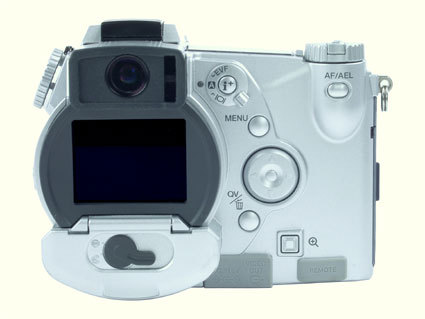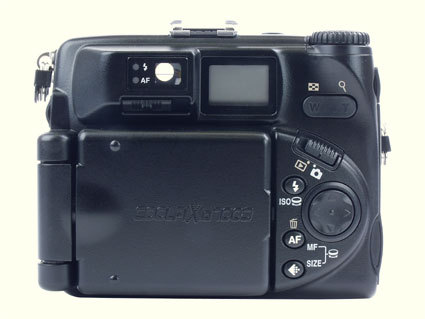Four 5-Megapixel Cameras In Review
Optical Viewfinders
Minolta Dimage 7
Minolta has opted for a digital viewfinder instead of the rather inconvenient optical one, which is too dark or has too wide a parallax. All you need to do is close in on your subject, and the TFT monitor at the back is automatically disabled to let the viewfinder take over. This can be handy for poorly-lit situations where you don't want to be noticed, or if you need to stabilize the camera. On the other hand, it is seriously lacking in definition. Manual focus, which is difficult enough to control with the rear monitor, becomes completely unusable. The LCD response is inadequate. The colors are dull and you can see jagged edges where there should only be curves. Still, there is one consolation: the image displayed is exactly that of the image captured.
Nikon Coolpix 5000
One good thing is that the optical viewfinder has a diopter adjustment and framing points. But it's a shame the camera is so small and designed more like a compact than a reflex. First complaint: the parallax error is quite high. The area in the viewfinder covers only 88% of the zone captured. A bit of the top is chopped off, and the left, right and bottom sides extend beyond the focus area. The error is great enough to make you wish you had the Dimage 7 viewfinder. What's worse, the positions for the viewfinder and diopter adjustment are very badly chosen. Unless you focus with the left eye, your nose is squashed against the rounded back of the TFT monitor, and even then the eye is still not close enough to the viewfinder. Likewise, you cannot adjust the diopter cursor without moving the camera back. You can either adjust the focus or look through the lens - you can't do both at once. It would have been much smarter to give it a jog-dial on the side instead of a cursor at the back. In practice, what you will mostly do is forget the viewfinder and use the TFT focusing monitor, which is much better designed.
Get Tom's Hardware's best news and in-depth reviews, straight to your inbox.

